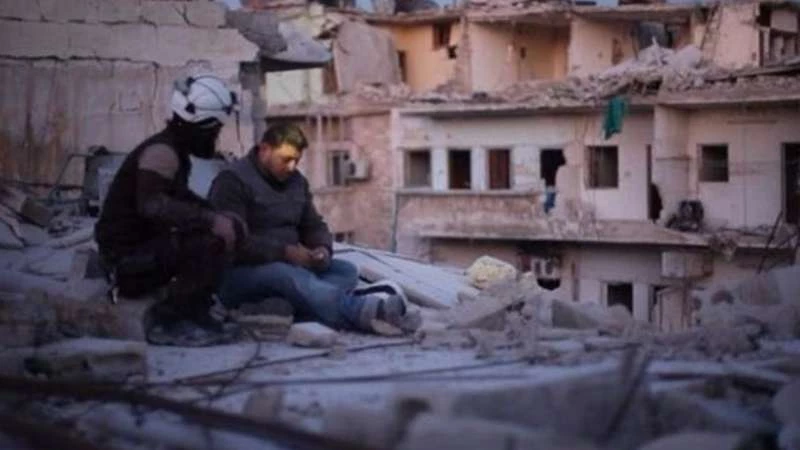About midway through what would be just under a year of filming, the filmmakers say they felt some pressure from their financiers – at that point a group of Aleppo-based filmmakers with the Aleppo Media Center – to split the story up into a series or even a long-form video journalism piece, and get it out in front of an audience sooner rather than later.
“We had this pressure that if we got the film out But neither he nor Fayyad, an award-winning Syrian filmmaker, were convinced that medium would impact the war. Instead, they pinned their hopes on engaging viewers through a more nuanced tale – a cinematic film that goes beyond the 24-hour news cycle of the complex crisis in Syria and delivers on the promise of the best in documentary film-making: a story that reveals the human impact of a brutally inhumane situation. The result is Last Men in Aleppo, which premiered at the Sundance Film Festival Jan. 23. Directed by Fayyad and co-directed and edited by Johannessen, in partnership with the Aleppo Media Center, the film offers a heart-wrenching truth, following volunteer men who formed the a rescue group that came to be known as “The White Helmets” in the devastating war. “It wasn’t about getting the story out there fast for us,” Fayyad told realscreen. “We wanted to get people’s eyes behind the war – it’s about the war, but it’s not about the war. It’s a story that is encompassed by that conflict, but we’re trying to get the human story out to the world.” To that end, rather than stick to the facts and figures, or explain the war in the larger historical context (similar to the Netflix documentary The White Helmets, which George Clooney championed and is now in talks to develop a fictional version), Last Men in Aleppo creates a patchwork of resonant moments, some barely watchable, like pulling lifeless infants from the rubble of Russian-dropped bombs, and some poignantly thoughtful, like creating a fish pond amidst mostly destroyed buildings. “The photographers By the time the movie made it into the program for Sundance, the situation in Aleppo changed completely from when they started filming. In September 2015, the opposition was still in Aleppo and there was still fighting, “but the history evolved as we were filming,” said Johannessen, noting, “Last month, Aleppo fell.” By Dec. 22, 2016, the Assad regime took full control of Aleppo, beating the rebels and again regaining possession of the city. “That historic moment was our inspiration,” said Fayyad. “It was about how we could use it in artistic ways, though. It was our fight to get the story out in this manner. How we could tell a story about the war and horrors of the war with a cinematic feeling.”



التعليقات (0)